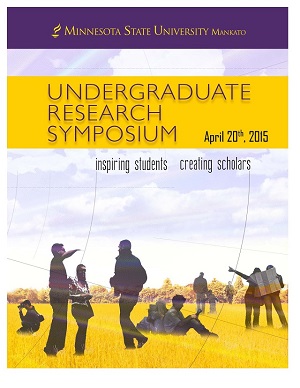Monstrosity from the Medieval to the Renaissance
Location
CSU 253
Start Date
20-4-2015 2:10 PM
End Date
20-4-2015 3:10 PM
Student's Major
Art
Student's College
Arts and Humanities
Mentor's Name
Alisa Emien
Mentor's Email Address
alisa.eimen@mnsu.edu
Mentor's Department
Art
Mentor's College
Arts and Humanities
Description
Conventionally, art historians have noted a break in continuity between the Medieval and Renaissance periods; however current scholarship suggests that this division might have been exaggerated. Specifically within the realm of monstrosity, figures found in examples of architecture, such as Romanesque column capitals with lions and creatures with many heads, limbs, and wings; and also among two dimensional art, mainly Medieval manuscripts and Renaissance paintings in the late 1400s to the early 1500s. A style early in the Medieval period that came to be known as the animal-style, abstract images of beasts and birds that flowed in from interweaving lines, preceded the creatures found in monastic manuscripts and architecture. Debate among scholars as to the purpose of such figures within the religious context gives possible rationale for the use of the strange monsters in early Renaissance art, and to be precise, the strange, purposeful mutations of figures within Hieronymus Bosch’s Garden of Earthly Delights: Hell (right panel of the triptych).
Monstrosity from the Medieval to the Renaissance
CSU 253
Conventionally, art historians have noted a break in continuity between the Medieval and Renaissance periods; however current scholarship suggests that this division might have been exaggerated. Specifically within the realm of monstrosity, figures found in examples of architecture, such as Romanesque column capitals with lions and creatures with many heads, limbs, and wings; and also among two dimensional art, mainly Medieval manuscripts and Renaissance paintings in the late 1400s to the early 1500s. A style early in the Medieval period that came to be known as the animal-style, abstract images of beasts and birds that flowed in from interweaving lines, preceded the creatures found in monastic manuscripts and architecture. Debate among scholars as to the purpose of such figures within the religious context gives possible rationale for the use of the strange monsters in early Renaissance art, and to be precise, the strange, purposeful mutations of figures within Hieronymus Bosch’s Garden of Earthly Delights: Hell (right panel of the triptych).
Recommended Citation
Reich, Jessica. "Monstrosity from the Medieval to the Renaissance." Undergraduate Research Symposium, Mankato, MN, April 20, 2015.
https://cornerstone.lib.mnsu.edu/urs/2015/oral_session_10/3




